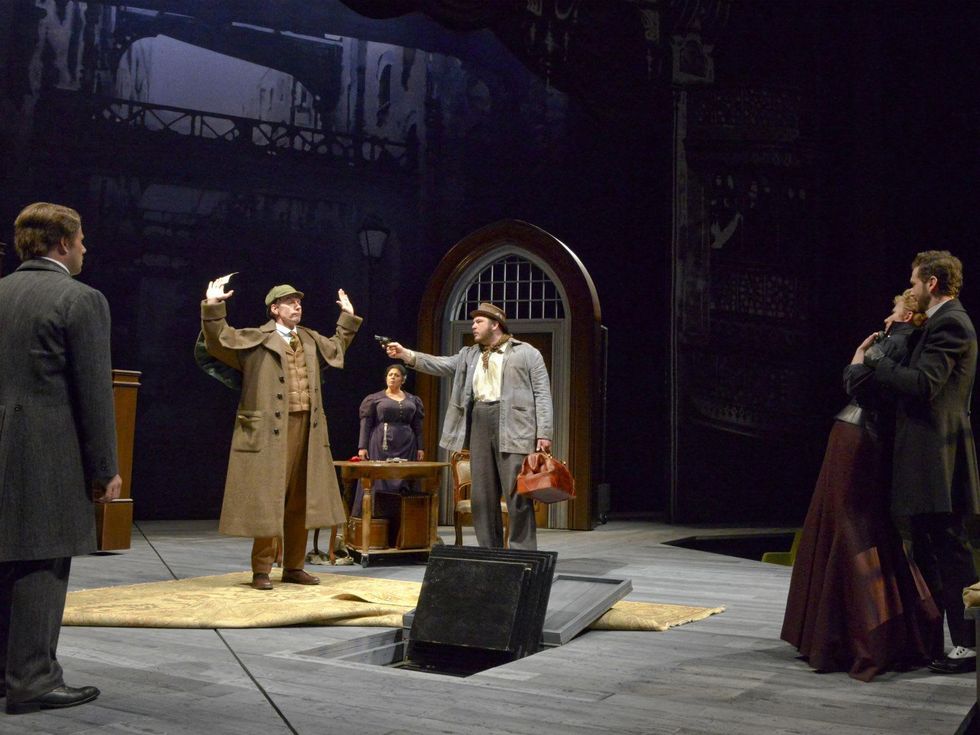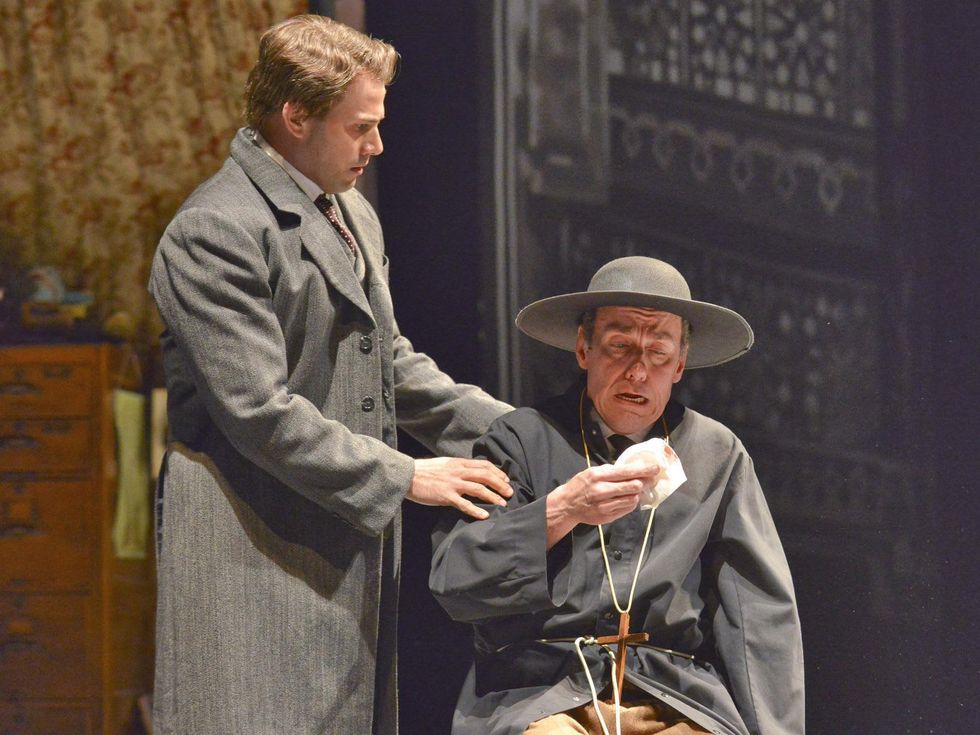Not So Elementary
Sherlock Holmes: The Final Adventure fails to live up to Dallas Theater Center's high standards
Since Sir Arthur Conan Doyle first wrote about Sherlock Holmes in 1887, the character has been portrayed across different mediums countless times. He obviously has staying power, as he’s currently at the forefront of two separate TV shows and an ongoing movie series.
Despite Holmes’ age, there couldn’t be a better time for Dallas Theater Center to present Sherlock Holmes: The Final Adventure (playing at Wyly Theatre through May 25). The production, based on the original 1899 play written by William Gillette and Doyle, sees Holmes (Chamblee Ferguson) lock wits with his nemesis, Professor Moriarty (Regan Adair), with help from his trusty sidekick, Dr. Watson (Kieran Connolly).
It’s a pretty flimsy plot as it is, so even though there were several good performances, nothing about any of the story arcs felt overly compelling.
The plot takes its thrust from a missing picture of the King of Bohemia (Hassan El-Amin) and Irene Adler (Jessica D. Turner), which the king is desperate to get back as he’s due to marry another woman. The hunt for the picture, and for Adler herself, puts Holmes and Watson in several perilous situations, both in England and in a trek across Europe.
One of the biggest reasons Holmes has endured for so long is his preternatural ability to see and sense things that others cannot. This may be easy to portray in print or on screen, but it’s a tad more difficult onstage, where attentions are divided and you often have to rely on the spoken word alone.
In this production, a few scenes successfully imparted Holmes’ unique wisdom, but a few too many missed the target.
Part of the issue is the thrust staging, which puts the actors among the audience but also occasionally blocks the views of audience members in the first few rows. This is one play where anyone who sits further back or higher up might have a better experience than those up close.
The actor who plays Holmes is key to the process, as he must appear as if his complicated lines come to him naturally. The normally unflappable Ferguson, so great in Clybourne Park and other DTC productions, struggled a bit on opening night, muffing more than a few lines. Although you can’t expect an actor to be perfect every night, every little slip broke the character’s spell and detracted from the plot as a whole.
Whether it was Ferguson grappling with an off night or something else, the story never really came together. It’s a pretty flimsy plot as it is, so even though there were several good performances, including Adair, Turner and Connolly, nothing about any of their story arcs felt overly compelling.
Russell Parkman and Jennifer Ables, however, deserve credit for scenic design and costume design, respectively. Parkman uses a relatively sparse set effectively, putting in key elements to set the mood, as well as drawing Holmes’ apartment set from the rear on tracks that made great use of the thrust stage.
Ables, meanwhile, ensures each actor has an authentic early 1900s feel. In fact, even though the cast was obviously in period garb, none of it looked like a costume. Instead, the wardrobe selections feel like an integral part of the characters, thereby enhancing the actors’ performances.
Dallas Theater Center has had a string of strong productions, but their version of Sherlock Holmes didn’t live up to their high standards. On another night, things might have been better, but based on this performance alone, there’s room for improvement.



